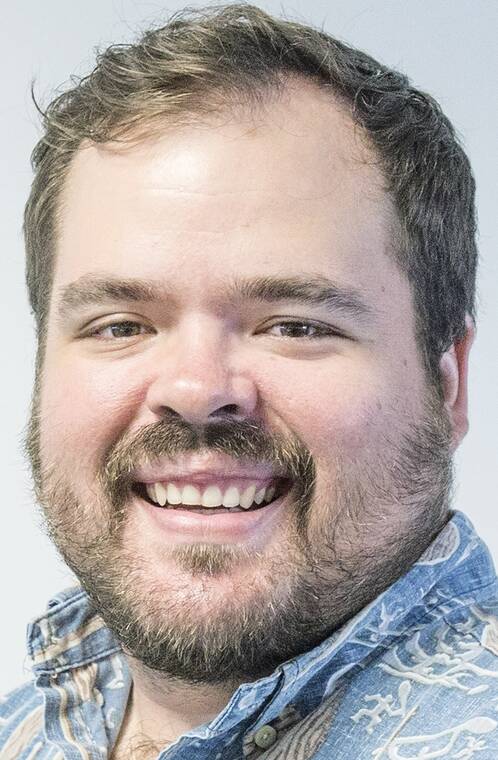The state’s biennium budget bill conveyed to Gov. Josh Green includes $2.5 million to fund the Puna Alternate Route Study.
The 2023 budget previously allocated $1 million in state funds for such a study, but required a $500,000 match by Hawaii County. Those state funds unexpectedly lapsed in mid-2024, leaving the Legislature to have to allocate them again this year.
The budget includes $1.5 million for the study of a Puna Makai Alternate Route, a highway between lower Puna and Highway 11 makai of Highway 130. Highway 130, the Keaau-Pahoa road, came close to inundation during the June 27, 2014, lava flow. Had the lava crossed the highway near Pahoa, lower Puna would’ve been effectively cut off from the rest of the island.
The funds will support a study to identify potential locations for an alternate access route into Puna, which would improve emergency response, reduce residents’ commute times, and alleviate traffic congestion in the area.
“Hawaii Island legislators came together this legislative session with a unified purpose: to secure funding for an alternate route that will benefit Puna residents,” said Rep. Greggor Ilagan, a Puna Democrat. “This funding will help plan a new route to ease traffic and provide emergency access during natural disasters.”
Ilagan noted that the need for an alternate route has been a top priority for Puna residents, consistently emerging as the most requested issue during the 48 town halls his office has hosted in Puna makai over the past four years.
In addition, state Reps. Jeanné Kapela and House Majority Caucus Leader Chris Todd, both Democrats, led efforts to secure $1 million in state funding for a Puna Mauka Alternate Route study aimed at addressing the mountain side of Highway 130. The state’s allocation is contingent upon an additional $1 million in matching funds from Hawaii County.
“Those moneys have been approved and encumbered,” Puna Councilwoman Ashley Kierkiewicz said of the county matching funds. “My understanding is that Public Works is utilizing that money to get started on the alternate road access plan for mauka and makai.”
Kapela, whose large district includes portions of upper Puna, called the funding “critical to evaluating the feasibility of this long-needed route for the Puna community.”
“Our residents deserve safe and reliable routes, which would deliver an improved quality of life,” she said.
Todd, who represents a portion of Hilo and upper Puna, said alternatives explored in the study could “reduce the community’s dependence on Highway 130, the only major transportation artery in Puna and a common source of traffic congestion.”
Kierkiewicz said state Transportation Director Ed Sniffen has “made it very clear that all options need to be on the table.”
“I’m of the same mindset,” she said. “If we were to ever go after federal funding, they’re going to want to know — when you look at the regional strategy for Puna — that all options are evaluated. They’re not going to want to just see roads for makai and mauka. They’re going to want to see interconnectivity and that we’ve evaluated all options.
“What the county has always pushed for — and I’m glad that our state counterparts are finally realizing it — is that we have a cohesive strategy that supports the entire Puna region. That’s something we’ve advocated for. That’s why I put $1 million toward doing that. And it seems that folks at the state level are on board with that perspective, too, which is why we’re seeing money for both mauka and makai.”
It seems a majority of Puna residents acknowledge another major roadway is needed — both to ease the traffic congestion that clogs Highway 130 each weekday and as a potential escape route in case of another natural disaster. However, Hawaiian Homes beneficiaries in Puna have voiced concerns that the state or county could develop an alternate route through Department of Hawaiian Home Lands properties, potentially displacing Hawaiians and harming communities in the process.
“Everybody needs to have a seat at the table,” Kierkiewicz said. “But what has been made abundantly clear through the Hawaiian Home Lands Keaukaha-Panaewa Regional Development Plan, is they don’t want to be home to a highway of Puna commuters. They have all of East Hawaii’s infrastructure — the landfill, the port, the wastewater treatment facility. They’re not looking for being home to another highway.”
State Sen. Joy San Buenaventura, a Puna Democrat who also advocated for the study’s funding, called it “a major step toward addressing one of Puna’s most pressing needs — safe and reliable access.”
“For too long, our community has relied on a single highway that becomes dangerously congested during daily commutes and natural disasters,” she said.
Email John Burnett at jburnett@hawaiitribune-herald.com.















